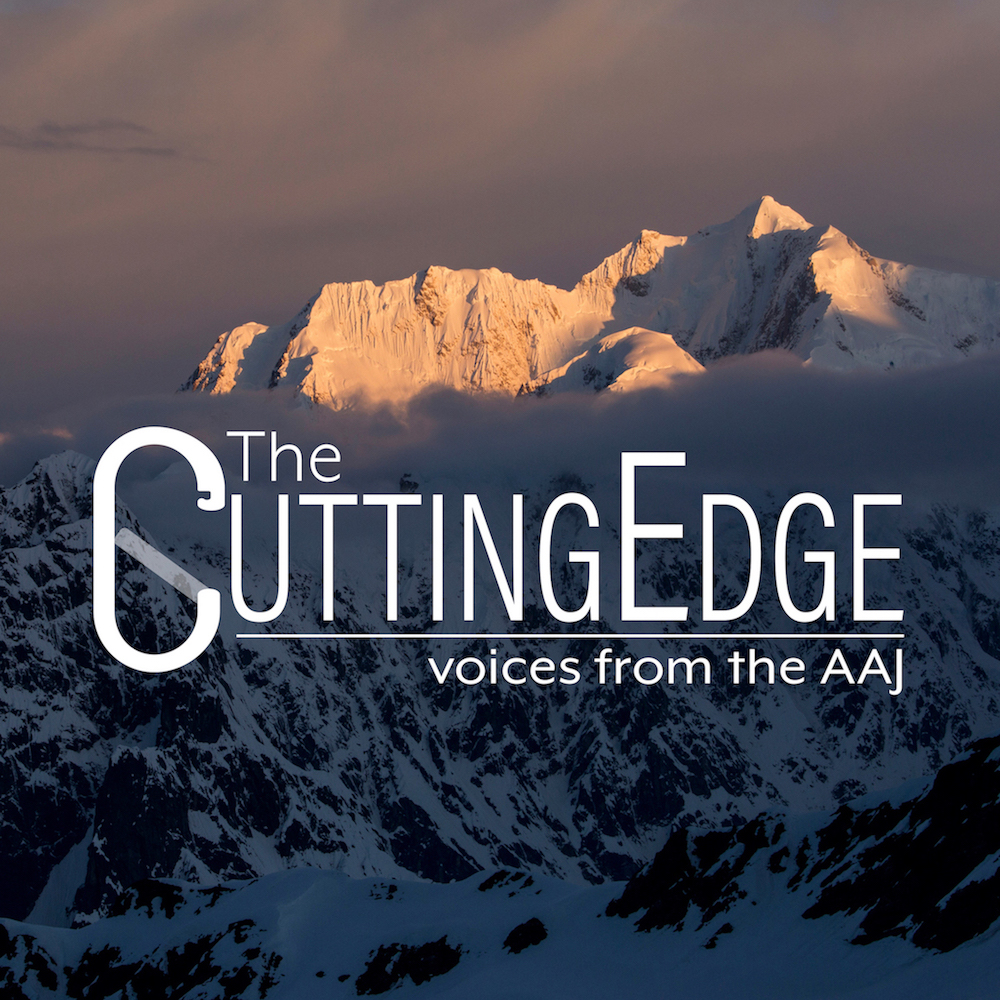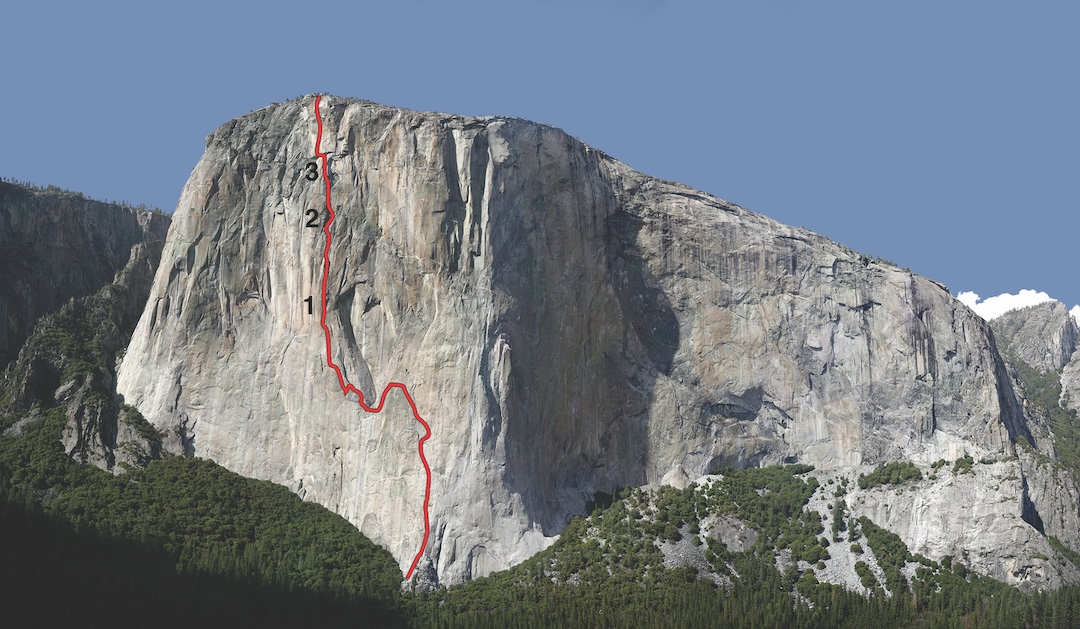Flashing Free Rider
California, Yosemite Valley, El Capitan
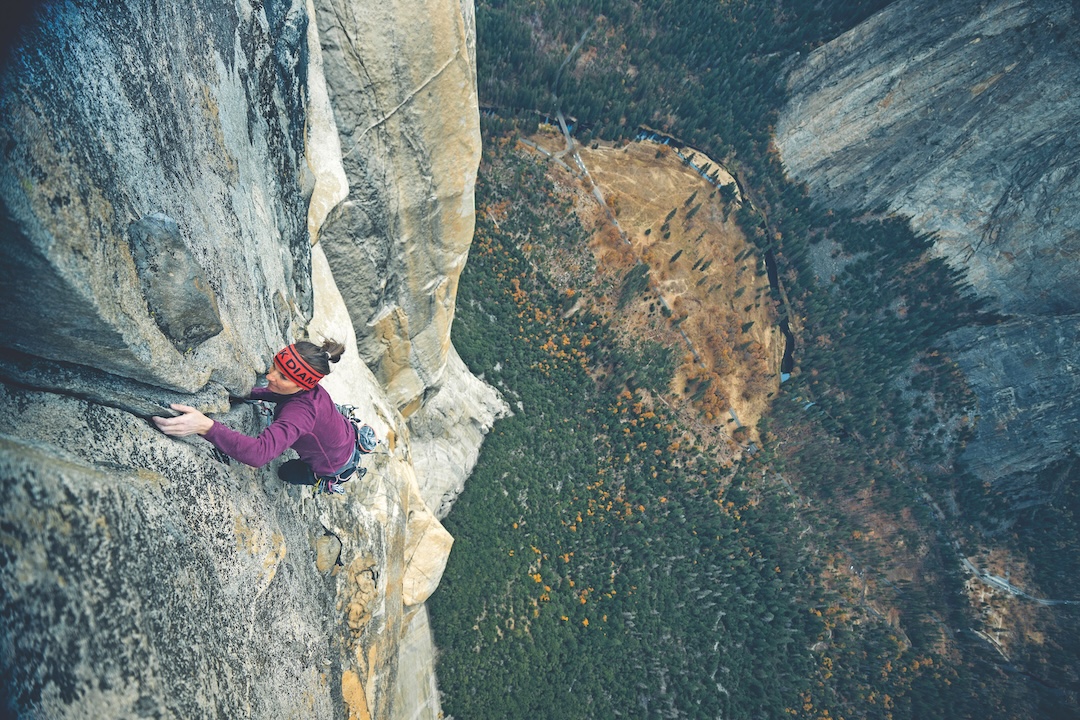
Over the years, my partner, Jacopo Larcher, and I have spent a lot of time on El Capitan, but somehow we always avoided Free Rider. This 3,000-foot route mostly follows the Salathé Wall, but with a series of variations that make Free Rider, at 5.13a, the easiest way to free climb the center of El Cap.
In 1995, Alexander Huber, while working on a free ascent of the Salathé, discovered a number of variations to the original line. On pitch 23, he created a variation—today called the Boulder Problem—as an alternative to the Teflon Corner, a slick 5.12d stemming problem. Huber also freed an alternative finish that skirted the Salathé headwall, as well as a long offwidth to avoid a 5.13 lead above the Ear on the Salathé route. He kept all this quiet until he could return to the wall with his brother, Thomas, three years later. The two redpointed Free Rider in 1998 in only 15 hours and 25 minutes.
Among the hard pitches on Free Rider, the Monster Offwidth was the one that seemed to me like an almost impossible challenge: a mythical beast, running 200 feet up to El Cap Spire on pitch 20. In fact, Jacopo and I had never attempted Free Rider, the Salathé, or Golden Gate mainly out of fear of the Monster, which is shared by all three of those climbs. For us, offwidth climbing felt so hard that we couldn’t imagine climbing in that style for 200 feet.
Instead, Jacopo and I focused on other free lines on El Cap that better suited our style—thin, technical, bouldery, and sustained routes like El Niño (VI 5.13c, 2015), Zodiac (VI 5.13d, 2016), Magic Mushroom (VI 5.14a, 2017), PreMuir (VI 5.13d, 2019), The Nose (VI 5.14a, 2019), and El Corazón (VI 5.13b, 2023, by me and Lara Neumeier). Every time we left Yosemite, we were already dreaming up our next adventure on the wall.
The idea of trying to flash Free Rider was first suggested to us a few years ago by Kolin Powick, a good friend and former product director at Black Diamond. Back then, it seemed unrealistic, but the seed was planted. We felt it might be something we’d attempt one day.
In 2023, the idea began to take firmer shape, and the more we thought about it, the more the challenge intrigued us. Could we really climb all those pitches without falling even once? It seemed impossible, especially considering how tricky even the easier pitches on El Cap can be. We decided our main goal would simply be to see how far we could get without taking a fall.
Over time, we had improved our Yosemite crack-climbing skills, even though we were always quite slow on big-wall ascents. We took our time to figure out the hardest pitches and solve the individual sequences, spending five to 11 days to free each route on El Cap. We weren’t deliberately preparing for flashing Free Rider, but these climbs brought us closer.
Our final preparation began in the fall of 2024, when Jacopo and I both climbed the single-pitch trad route Magic Line, the thin 5.14c layback by Vernal Falls in Yosemite, less than two weeks apart in late October and early November. That’s when the decision was made—it was time to try Free Rider.
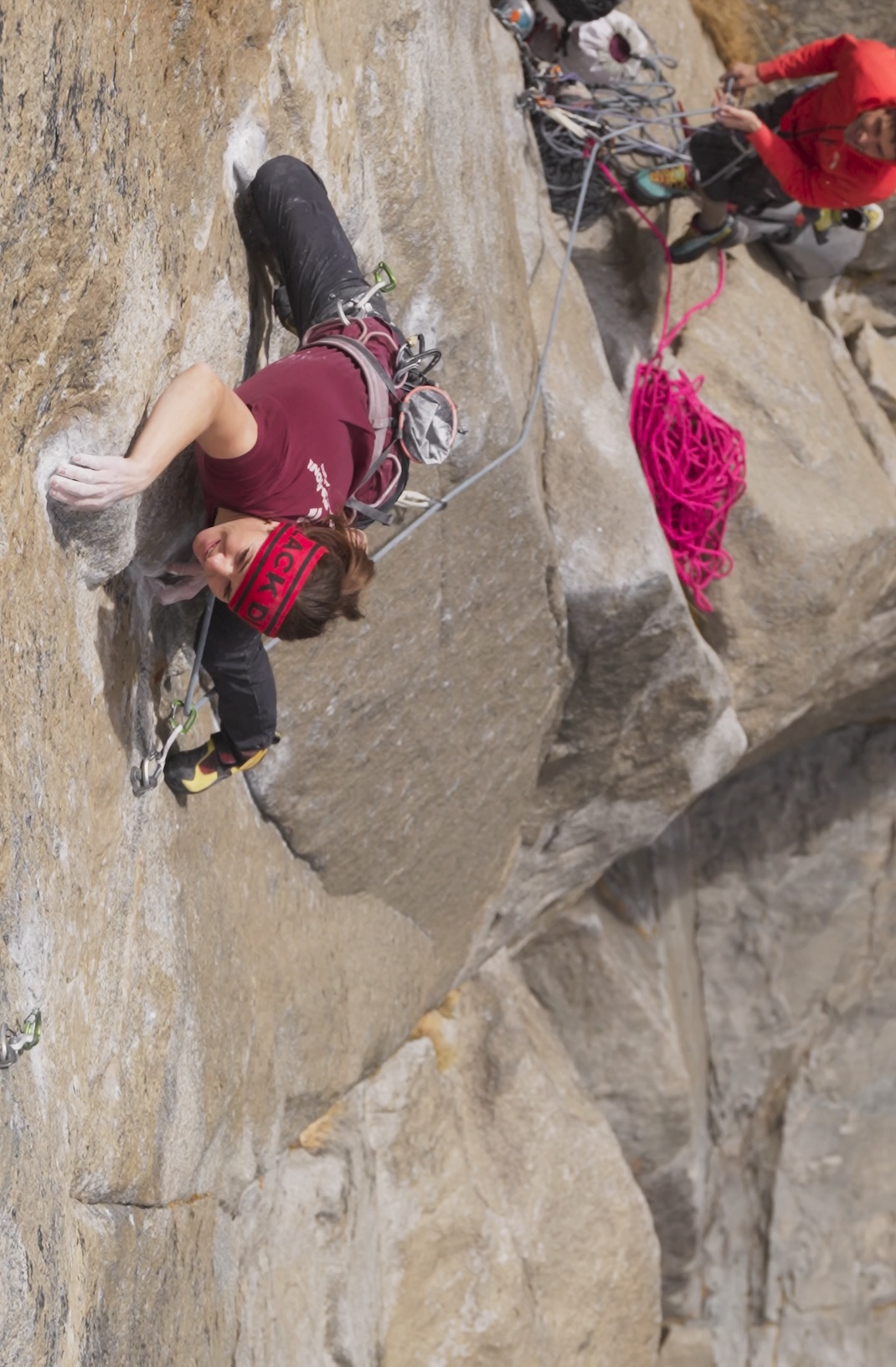
To prepare for Free Rider’s wide cracks, we dedicated four days specifically to offwidth climbing, tackling old-school Yosemite 5.10s like Generator Crack, Twilight Zone, and Ahab. These routes pushed us to our limits but also helped us overcome our biggest worry about Free Rider.
On our first offwidth day, we set the goal of top-roping Generator Crack two times, back to back, before trying Twilight Zone—which I did on lead and which was one of my hardest onsights ever! (It felt scary and insecure—like wrestling with myself for 40 minutes.) On the second day, we could barely get out of bed, with our muscles hurting all over. We needed half a day off before we got back to the next offwidth. But every day felt easier, and when we returned to Generator Crack on the last day of our offwidth clinic, it felt way more enjoyable.
I also had a good day of preparation by climbing Astroman and the Rostrum back to back, which I did with Laura Pineau on November 10. (Jacopo was trying Magic Line that day.) Covering so many pitches of different crack sizes in a single day was excellent training. Still, I wasn’t sure such limited preparation would be enough. Thoughts of falling in key sections lingered.
First was the Freeblast, the first ten pitches of the Salathé Wall; here, the climbing involves notoriously slick and difficult friction. Then there was the dreaded Monster. In the days leading up to the attempt, Jacopo and I sought advice from friends: Emily Harrington gave me special beta for the crack, including using double shoes on one foot—a larger shoe over a smaller one for more secure jams—and recommended elbow pads and kneepads. Alex Honnold shared a crucial piece of beta: If we got too tired, we should lean outward to the right, resting off a jammed left leg. This would turn out to be very helpful.
To better understand the moves on the Boulder Problem— the V7/5.13a technical crux on pitch 23 (originally climbed at 5.12d by the Hubers; a hold later broke)—we watched the video of Alex climbing this sequence in the film Free Solo. (We never planned to try the Teflon Corner or have it as a Plan B; for us, it was always clear that if we fell on the Boulder Problem, our flash was over.) We could have prepared more thoroughly for other pitches, but diving in with minimal beta felt less stressful. Other than the Monster Offwidth and the Boulder Problem, we’d be improvising.
On the day we began—November 19, 2024—I was nervous but excited. Our original plan was to start climbing at 4 a.m., but the forecast had changed, with clouds and possible snow for the first two days, and then even worse. Our upcoming flight home to Europe meant it was now or never, so we decided to wait until 8 a.m., but it was still freezing cold at the start. Somehow the poor forecast took the pressure off—we knew that if it started to snow or rain, it would be over, so we took an attitude of “Let’s see how far we get.” With numb fingers and toes, I overgripped every hold on the first pitch, and was glad when the day eventually began to warm up.
On pitch four, a 5.11b slab, a bolt up and left lured me off route. It felt steeper and harder going that way, so I downclimbed a couple of moves and took a rightward detour, skipping that bolt. Later, Eric Bissell, who was filming our ascent, told me that going right and skipping the clip is the standard way to climb that section. Luckily, I realized my mistake in time. Above, the 5.10 corner/chimney of the Half Dollar pitch was wet, and Jacopo and I were both relieved when we got through this and finished Freeblast.
We continued that same day over to Lung Ledge at the base of the Hollow Flake, having swung leads all day. (As with our previous El Cap climbs together, Jacopo and I planned to trade leads on most of Free Rider. For the hardest pitches, I led the Monster and Scotty Burk offwidths, both of us led the Boulder Problem, Jacopo led the first pitch of the Enduro Corner while I led 5.12 pitch to the Round Table.) Early the next morning, we tackled the Hollow Flake. Jacopo led the pitch, which felt like climbing three pitches in one. First, you downclimb about 100 feet, then traverse to the flake, and then climb back up 165 feet. It felt endless and physically demanding.
After that, the climbing became more enjoyable, with easier terrain that allowed us to move faster. Before long, we reached the Ear, pitch 18. I led this 5.7 chimney, which was nerve-wracking at first. It felt exposed, and placing gear was difficult. But as I climbed higher, more holds appeared, and the chimney wasn’t as bad as I’d initially thought. When I reached the belay, though, my nerves spiked again—there it was, the Monster Offwidth. It looked even more intimidating and endless than I had imagined, this smooth, dark crack splitting the blank granite. But I couldn’t wait to start!
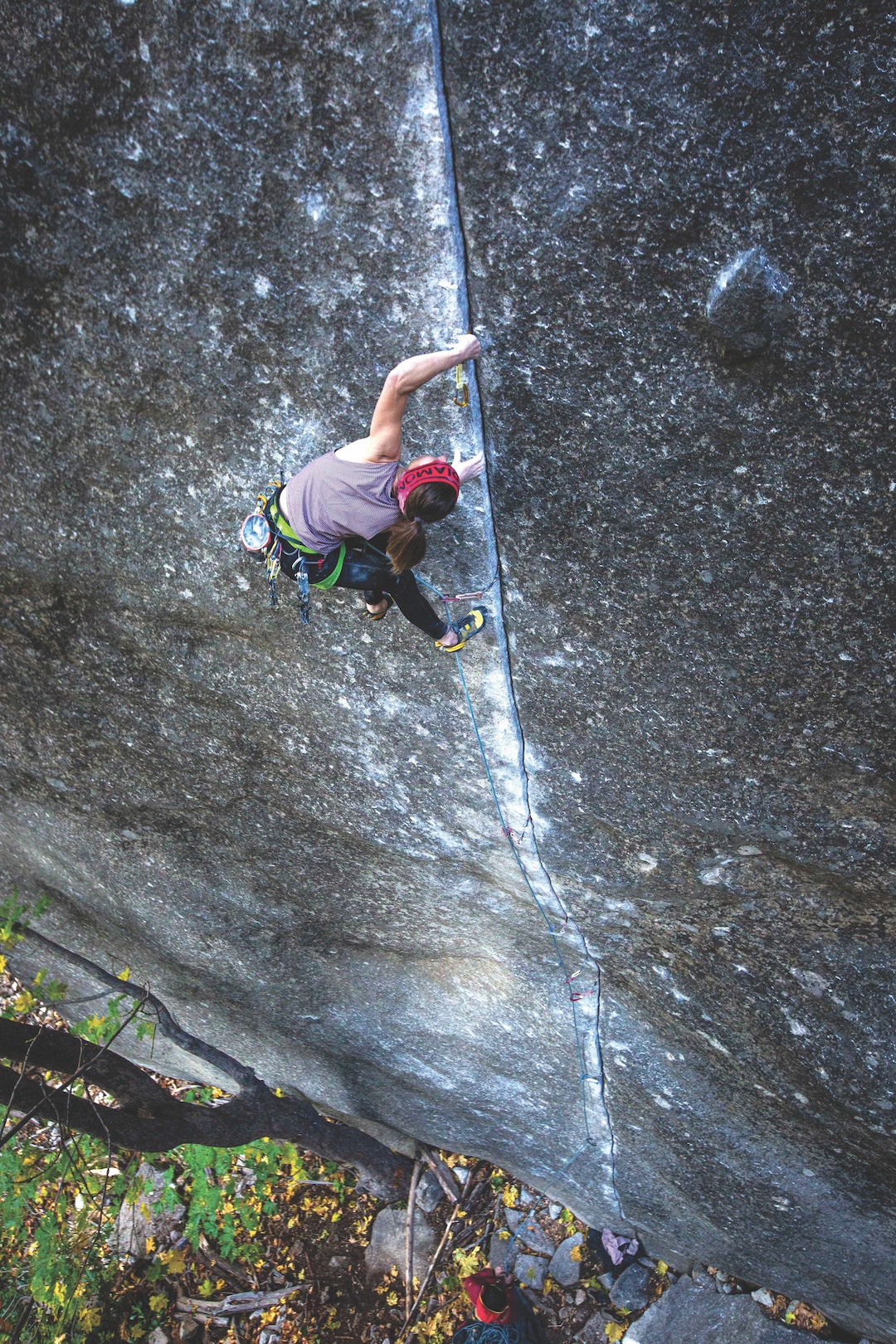
The hauling up to that point had been tough. On Freeblast, we hauled one heavy bag that constantly got stuck. At Heart Ledges, we picked up a second haulbag with our portaledge that we had pre-hauled two days earlier, using fixed lines that drop straight from Heart Ledges to the ground. We had enough gear and supplies for four days. As we climbed higher, the bags got lighter and the wall got steeper, making the hauling easier.
The Monster Offwidth was my lead. Within ten feet, I was already out of breath. I used every trick I had learned: double shoes on my right foot (a borrowed size 41 TC Pro from my friend Nemo over my size 37 TC Pro), an elbow pad and kneepad for my left side, and Alex’s leg-jam-and-lean resting technique. None of it made the climbing easy, but it made it possible. I focused on one move at a time, trying not to think about how much farther I had to go. When I finally reached the belay, roughly 30 minutes later, I was overwhelmed with relief. One of the hardest sections was behind me, but it had taken everything.
We pushed on to El Cap Spire and, in the dark, climbed two more pitches, fixed them, and then slept at the Spire. That night marked our lowest point in terms of energy—we were totally wasted after the Monster Offwidth, and we could have used a rest day. Still, we were both thrilled to have climbed this far without falls, and that night rested as best we could.
We allowed ourselves a later start, letting the sun warm the stone. We didn’t talk much about the next pitches, only setting it up so that Jacopo would try the Boulder Problem first, since I had led the hard pitches the day before. Normally, we talk a lot about the cruxes and beta and plans, remembering all the moves and footholds. But on Free Rider it was different—we just focused on moving upward.
As a warm-up, the 5.10 crack below the Boulder Problem pitch was already demanding. By the time I reached the belay I was nervous, and the crux looked as intimidating as I had imagined—slightly overhanging and complex, with a confusing array of bad footholds.
Jacopo seemed to be pretty chill when he started. It was hard to see the pressure he felt (and about which he only told me afterward). He climbed very smoothly, making it look easy up to the infamous “ninja kick.” There, he started to struggle. It seemed like he wanted to mantel up on the “breadloaf” pinch, which didn’t work, and then he missed a tiny undercling pocket that helps queue up the kick move. One second later, he was hanging on the rope—and all was over! After the fall, there was no noise of frustration or shouting; Jacopo just said, “Luckily I had a rope. And now all the pressure is gone.”
Jacopo’s fall dealt a blow to my confidence. He is stronger than me, and if he wasn’t able to do it, how could I?
Still, I had the advantage of seeing his attempt, getting his beta, and adjusting my approach based on what I’d learned—that I could use the undercling pocket to set up for the kick, and that the hold after the kick was positive. I reminded myself to focus on giving my best on every single move, and to let go of what I couldn’t control.
As soon as I started to climb, the pressure dissolved and I immediately got into fight mode. I used the same beta as Jacopo, but my height made the sequence more challenging. I couldn’t reach the breadloaf before the kick move from the same footholds. Realizing this, I climbed back to rest on a good crimp, and then looked for a different solution. That adjustment drained me, and by the time I set up for the ninja kick, I was pumped.
When I finally committed, the kick felt completely out of control. For a brief moment, I was sure I was going to fall. But miraculously, my foot stuck to the dihedral wall. That moment—when everything hung by a thread—was one of the most intense of my climbing career. And when it all clicked, it was one of the best feelings I’ve ever experienced on a wall.
Jacopo’s fall meant his chance to flash Free Rider was gone, though he did redpoint the pitch right after I sent it. I could see how much the fall—his only fall on the route—hurt him. It is such a fine line between sending and failing on a flash attempt, and there is no second chance. We had never had those feelings before on El Cap. Still, despite his disappointment, Jacopo cheered me on. His unwavering support made everything easier, and I couldn’t have done it without him.
After the Boulder Problem, I felt an incredible surge of energy and euphoria. I wanted to ride that high and climb as far as possible that same day. (I’d found I could stay focused during the climbing, but it felt harder to manage my nerves in the portaledge at night.) Our original plan had been to bivy before the difficult Enduro Corner to save energy, but I had the feeling it would be better to continue all the way to the sloping ledge of the Round Table, beyond the Enduro Corner.
Jacopo led the 5.11 first pitch of the Enduro Corner, pitch 26, and I followed. The climbing was tough, with bad hand jams and tricky layback sections. Leading the upper corner, a 5.12 pitch, I opted to layback the entire section. It was exhausting and more physical, but it felt safer than jamming. The corner was pumpy, and I had to climb quickly and place minimal protection to avoid burning out.
Afterward, we moved into the long 5.12 traverse to the Round Table. While seconding, at the start of that pitch, I had to stretch dynamically to reach a hold, barely catching it with my second hand to stop the swing. It felt wild and out of control, but I didn’t hesitate, which saved me from falling.
At the Round Table, we took a short break to rest and eat, and then I decided to climb another pitch before stopping for the night. To my surprise, it was harder than I’d expected—and harder than the 5.11d hand crack indicated in the topo. I hadn’t brought enough cams or a tagline, and the crack near the top was wet and slippery, which stressed me out. When I finally reached the belay, I was exhausted.
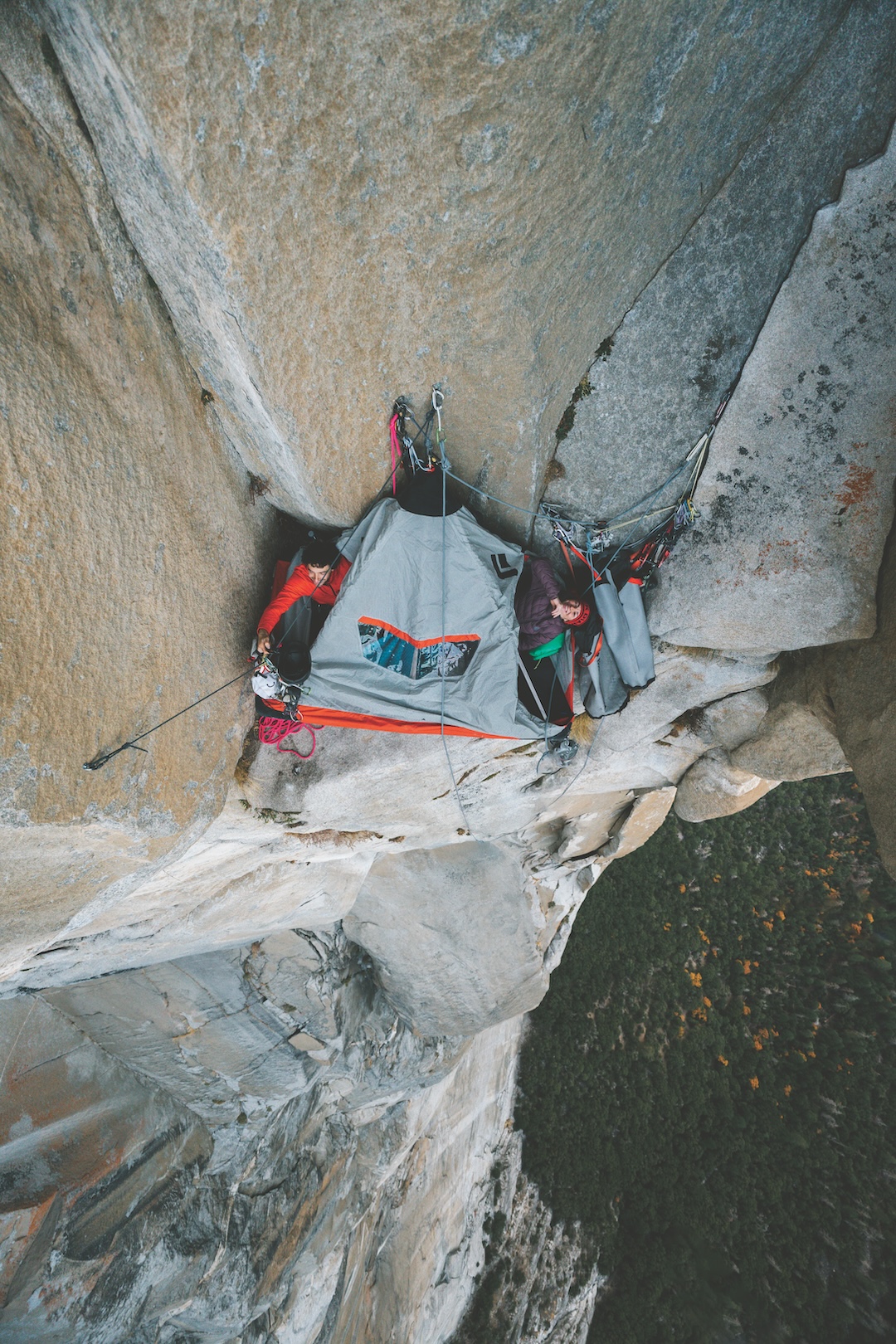
That night on the Round Table wasn’t restful, with the 5.10d Scotty Burk Offwidth still looming above—the last true battle. If I could make it up that pitch, I had the feeling the flash would be in the bag. When Jacopo fell asleep, it was completely silent up there. I looked up at the sky, just thinking about how it would all be over in 24 hours. Will I have sent or will have I fallen? And how will that feel? I’d been telling myself at every moment on the wall that I should be proud to have made it so far. I could have fallen on the Freeblast or the Monster. At the same time, so close to the flash, it was hard to feel satisfied with anything less than success.
The next day, I battled my way up the Scotty Burk, and then came the final chimney, pitch 32, a 5.9. I climbed with my left side in first, pushing upward, but when I reached the overhanging section, I couldn’t exit. With my back stuck to the wall, the good holds were out of reach. I had to downclimb, reposition myself with my right side in first, and then climb up again.
This time, I grabbed the good holds and executed the chimney. That was the very last little hurdle. From there, it was easy terrain to the top.
When we finally reached the summit of El Capitan, I was overwhelmed with emotion. The experience felt surreal—after all the effort, fear, and doubt, it was done. Standing there with Jacopo, looking out over Yosemite Valley, I could barely believe I had flashed the Free Rider.
SUMMARY: No-falls first-try ascent of Free Rider (VI 5.13a) on El Capitan in Yosemite Valley, California, by Barbara Zangerl, November 19–22, 2024. This was the first flash of any of El Cap’s main wall routes.
ABOUT THE AUTHOR: Born in 1988, Austrian Barbara (Babsi) Zangerl started climbing at age 14. In addition to numerous free ascents of El Capitan routes, she has redpointed 5.14d sport climbs as well as the Yosemite traditional climbs Meltdown and Magic Line (both 5.14c).
So Close: A Quarter Century of El Cap Onsight and Flash Attempts
Prepared by Matt Samet
1997
Japanese climber Yuji Hirayama goes for the Salathé Wall (VI 5.13b) onsight over two days. He takes one fall on the 5.12d Teflon Corner (pitch 23), pulls his rope, and onsights the adjacent Huber Pitch (5.12d at the time)—
today known as the Boulder Problem. He falls on each of the crux headwall pitches, but redpoints them to free the full Salathé.
1998
Leo Houlding and Patch Hammond (both U.K.) attempt El Niño (VI 5.13c) ground-up and onsight, one month after the first ascent by Alex and Thomas Huber. Houlding, age 18 at the time, grabs a quickdraw on the route’s third pitch (the first 5.13) to avoid a 70-footer and pulls on a draw on the first bolt of the next pitch to suss the initial holds. He redpoints those pitches and onsights the rest of the route’s six 5.13 pitches, and he seconds all of Hammond’s leads cleanly.
2003
Hirayama goes for El Niño onsight, taking two falls—one on pitch four, one on pitch 15—before next-go redpointing those pitches. He onsights the rest of the route in four days total, with a day on the Valley floor in the middle of the ascent.
2004
American twins Mark and Mike Anderson climb Free Rider, swinging leads, with the second climbing free and Mike taking no falls, including leading the Boulder Problem (5.12d at that time). The catch? The brothers had aided the Salathé Wall two years earlier, though they felt this added no useful beta for their flash attempt. They also returned to the Valley floor twice before jugging back up their ropes for their final, three-day push—once so Mike could fly home to Salt Lake City to take final exams for his master’s degree in robotics.
2006
American Alex Honnold does Free Rider over two days (11 years before his famous solo). Having already done the Freeblast—the lower ten slab pitches, graded 5.11—Honnold wasn’t attempting a flash of Free Rider, but, he says, “I tried my hardest the first time.” He fell on the Boulder Problem crux and then redpointed the pitch next go, though, he noted, “it’s worth adding that the crux was much easier back then [at 5.12d]—a jug broke off later and forced the karate-kick maneuver.”
2009
Swiss climber Ueli Steck leads every pitch free on Golden Gate (VI 5.13b) over four days, onsighting the climb’s three 5.13 and four 5.12 pitches. The only fall he takes is on the 5.11c hand crack above El Cap Spire, having slipped on wet rock.
Cédric Lachat, also from Switzerland, onsights every pitch of Free Rider, but with a few “asterisks”: He had already onsighted the Freeblast ten days earlier during an aborted attempt on Golden Gate, and he skipped these pitches during the Free Rider ascent, jumaring up to Heart Ledges. Lachat also fell off the Boulder Problem (newly upgraded to 5.13a since the key hold broke), then onsighted the Teflon Corner; he led every other hard pitch onsight during the three-day effort.
2012
Leo Houlding climbs Free Rider mostly onsight over two days—minus the Freeblast, which he had previously climbed—with just one fall on the Boulder Problem, which he quickly redpoints before scampering to the top.
2014
In late spring, American climber Ethan Pringle attempts to flash Free Rider. Climbing with Walker Emerson in a 36-hour push, Pringle takes one fall on the Boulder Problem, then redpoints the pitch, before taking the route to the top with no further falls.
In May, U.K. climbers James McHaffie and Dan McManus set out to climb the Salathé, with McHaffie ultimately making a ground-up free ascent, after some falls on the headwall
pitches. En route, both climbers flash the Boulder Problem, with beta from Valley local James Lucas, and McHaffie flashes the Enduro Corner (5.12). Had they taken a left below the headwall onto Free Rider, it’s likely McHaffie would have achieved the first El Cap flash.
That October, U.K. climber Pete Whittaker tries to flash Free Rider, taking a fall on the Boulder Problem, then redpointing it, and then onsighting the 5.12d Teflon Corner next door. Whittaker and partner Tom Randall had previously climbed the Freeblast, and they left the wall after day one on Free Rider because of crowds around Heart Ledges, returning the next morning to continue up the route.
2016
U.K. climber Calum Coldwell-Story makes a one-fall ascent of Free Rider, coming painfully close to the flash before falling off the last move of the Boulder Problem. He redpoints that pitch next try and either leads or seconds every other pitch with no falls.
2018
Czech climber Adam Ondra attempts the Salathé (VI 5.13c while linking the two headwall pitches) onsight in a one-day push, supported by Nico Favresse (Belgium). Ondra fires through the Boulder Problem but falls on the headwall in the mid-day heat. As with McHaffie four years earlier, Ondra might well have fired an El Cap route first try if he’d opted for the Free Rider finish.
2021
After focused training, Josh Wharton (USA) makes it to the end of the Boulder Problem on Free Rider, sticking the ninja-kick move, only to have his foot slip before finishing.
2022
The Belgian climber Sébastien Berthe has a near miss on the Pineapple Express variation (VI 5.13b/c) to El Niño (VI 5.13c) in April. Supported by Soline Kentzel, he onsights or flashes every pitch, including five pitches of 5.13, up to pitch 23, taking one fall on the 5.13b Eismeer variation before redpointing it. Berthe then tries the 5.13a Lucy Is a Labrador variation but slips out of soaked pin scars, before continuing to the summit again via Eismeer for a 17-hour toe-to-top effort.
Czech climber František Bulička comes painfully close to flashing Free Rider, as he fires through the Boulder Problem with beta from partner Tim Greenwood, only to fall higher up, on the Enduro Corner, when his foot slips on a sling attached to a fixed Hexentric.
2024
Jacopo Larcher (Italy) nearly flashes Free Rider along with Babsi Zangerl. He falls once on the Boulder Problem, then redpoints the pitch and continues to the top without falls.
Sources: Climber accounts, published reports (including the AAJ), and correspondence with the climbers.

